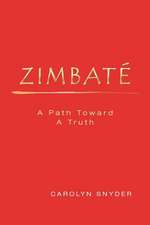Paper Prototyping: The Fast and Easy Way to Design and Refine User Interfaces: Interactive Technologies
Autor Carolyn Snyderen Limba Engleză Paperback – 11 mai 2003
*Enables designers to solve design problems before implementation begins *Five case studies provide real world examples of paper prototyping at work *Delves into the specifics of what types of projects paper prototyping is and isn't good for.
Din seria Interactive Technologies
- 20%
 Preț: 310.79 lei
Preț: 310.79 lei - 34%
 Preț: 355.53 lei
Preț: 355.53 lei - 34%
 Preț: 244.47 lei
Preț: 244.47 lei - 20%
 Preț: 291.57 lei
Preț: 291.57 lei - 38%
 Preț: 348.00 lei
Preț: 348.00 lei - 31%
 Preț: 306.16 lei
Preț: 306.16 lei - 20%
 Preț: 496.28 lei
Preț: 496.28 lei - 32%
 Preț: 229.80 lei
Preț: 229.80 lei - 32%
 Preț: 228.02 lei
Preț: 228.02 lei - 31%
 Preț: 275.36 lei
Preț: 275.36 lei - 31%
 Preț: 359.88 lei
Preț: 359.88 lei - 20%
 Preț: 594.99 lei
Preț: 594.99 lei - 20%
 Preț: 730.82 lei
Preț: 730.82 lei - 21%
 Preț: 297.76 lei
Preț: 297.76 lei - 27%
 Preț: 412.82 lei
Preț: 412.82 lei - 20%
 Preț: 410.91 lei
Preț: 410.91 lei - 27%
 Preț: 258.72 lei
Preț: 258.72 lei - 20%
 Preț: 346.23 lei
Preț: 346.23 lei - 28%
 Preț: 210.27 lei
Preț: 210.27 lei
Preț: 227.94 lei
Preț vechi: 248.57 lei
-8% Nou
Puncte Express: 342
Preț estimativ în valută:
43.61€ • 45.54$ • 36.02£
43.61€ • 45.54$ • 36.02£
Carte tipărită la comandă
Livrare economică 08-22 aprilie
Preluare comenzi: 021 569.72.76
Specificații
ISBN-13: 9781558608702
ISBN-10: 1558608702
Pagini: 408
Dimensiuni: 187 x 235 x 28 mm
Greutate: 0.83 kg
Editura: Elsevier
Seria Interactive Technologies
ISBN-10: 1558608702
Pagini: 408
Dimensiuni: 187 x 235 x 28 mm
Greutate: 0.83 kg
Editura: Elsevier
Seria Interactive Technologies
Public țintă
HCI practitioners, usability engineers, software developers, Web designers, and Web application developers.Cuprins
Foreword by Jakon NielsenAcknowledgmentsPart I—Introduction to Paper PrototypingChapter 1: IntroductionChapter 2: Case StudiesChapter 3: Thinking about PrototypingChapter 4: Making a Paper PrototypePart II—Process: Conducting a Usability Study with a Paper PrototypeChapter 5: Planning a Usability Study with a Paper PrototypeChapter 6: Task DesignChapter 7: Preparing the PrototypeChapter 8: Introduction to Usability Test FacilitationChapter 9: Usability Testing with a Paper PrototypeChapter 10: ObserversChapter 11: Data: Capturing, Prioritizing, and CommunicatingPart III—Deciding Whether to Use PaperChapter 12: What Paper Is (and Isn't) Good ForChapter 13: The Politics of Paper PrototypingChapter 14: When to Use PaperPart IV—Broadening the FocusChapter 15: Examples of User-Centered DesignChapter 16: Final ThoughtsReferencesIndexFigure CreditsAbout the Author














